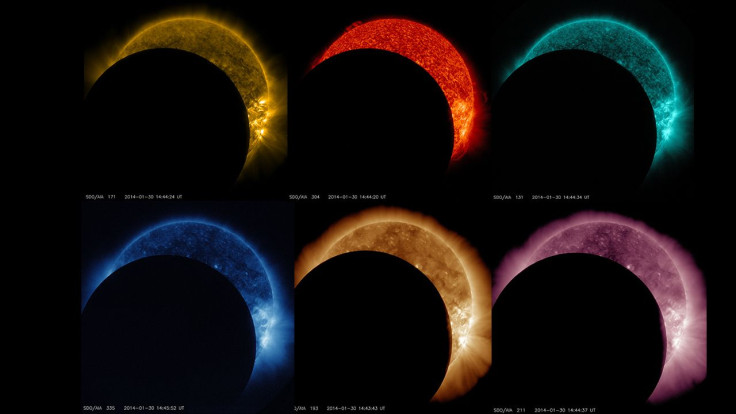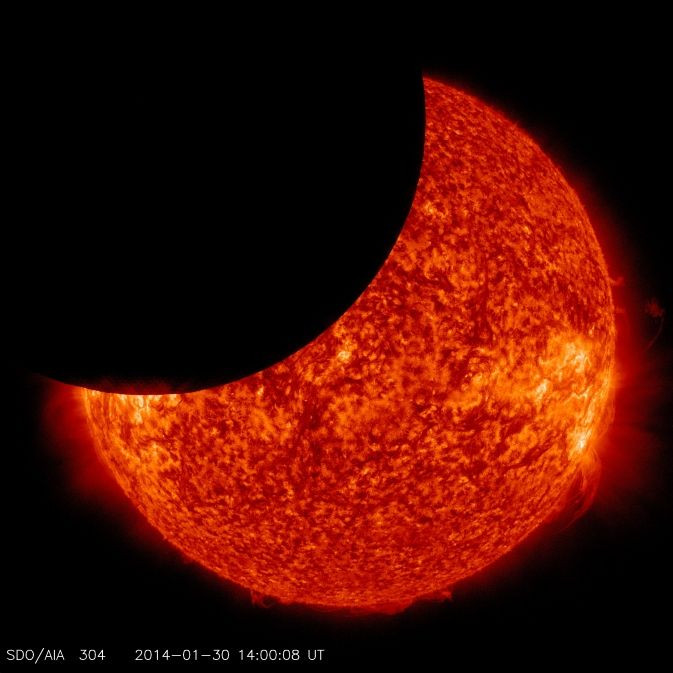Longest Lunar Transit? NASA Images Show Rare Solar Eclipse Not Visible From Earth [PHOTOS]

A lunar transit took place on Thursday morning -- a phenomenon only visible in space.
At 8:30 a.m. EST, the moon moved between NASA’s Solar Dynamics Observatory, or SDO, and the sun, where images were captured of a partial solar eclipse. The event lasted 2.5 hours and is considered the longest one ever recorded in the spacecraft’s four-year mission.
Lunar transits, the name astrologers give to solar eclipses not visible from Earth, typically last 30 minutes. They tend to take place two to three times a year. The last one recorded was on Dec. 2, 2013.
A video of the latest lunar transit shows images using SDO’s far-ultraviolet filter. At its maximum eclipse, as much as 90 percent of the sun was covered. Mission controllers for SDO prepared for the event by charging the spacecraft’s batteries to prevent a “brown out,” spaceweather.com reports.
Just after the lunar transit is finished, a sunspot named AR1967 erupted at 11:11 a.m. EST. The images captured shows “a plume of hot plasma” flying away from one side of the sun as the moon exits on the opposite end.
Solar flares, which are powerful bursts of radiation, do not pass into Earth’s atmosphere, but they can disturb GPS and communication signals. According to the National Weather Service, the flare could cause “geomagnetic storming” on Feb. 2, potentially leading to minor radio interference.

NASA’s SDO is designed to focus on the sun’s energy, where it is stored and how it is released into the atmosphere. Launched on Feb. 11, 2010, with a five-year mission, SDO was placed in a geosynchronous orbit so that it will always remain directly above its ground station in New Mexico.
“By better understanding the Sun and how it works, we will be able to better predict and better forecast the “weather out in space” providing earlier warnings to protect our astronauts and satellites floating around out there,” NASA writes in its description of the satellite on its website.
© Copyright IBTimes 2025. All rights reserved.






















